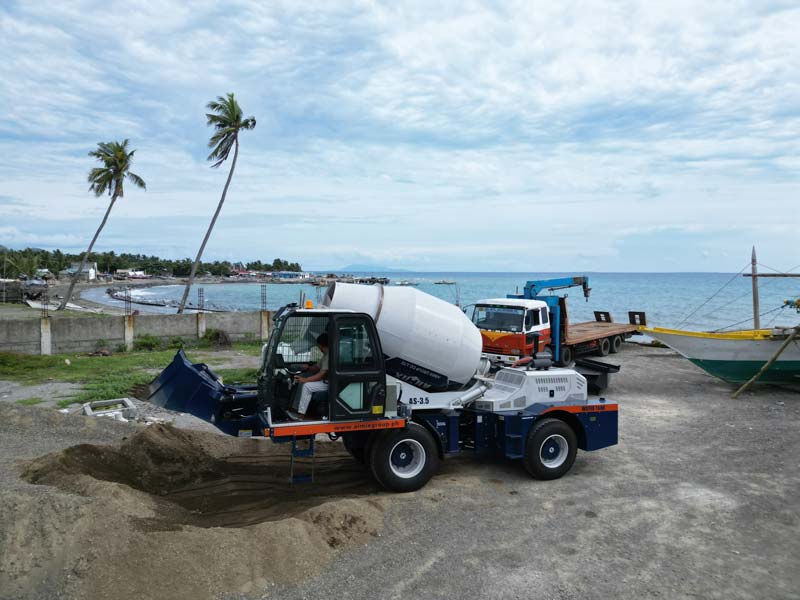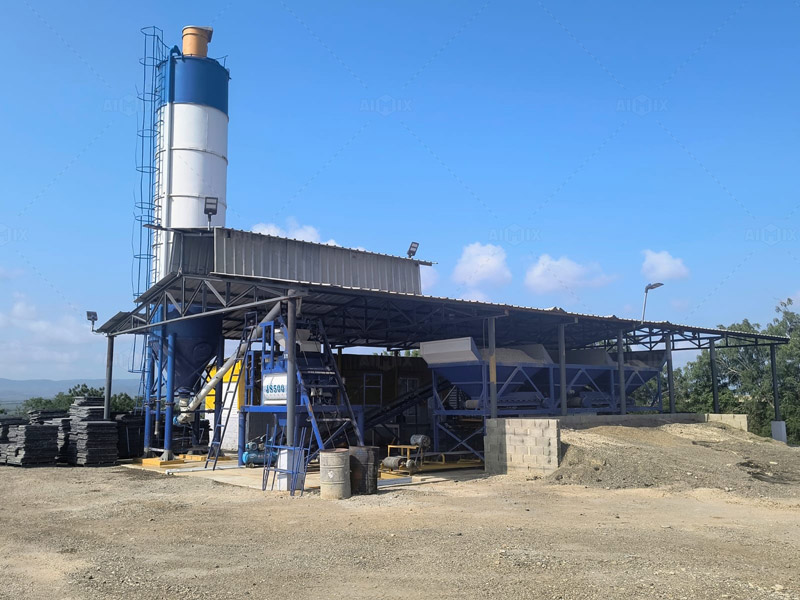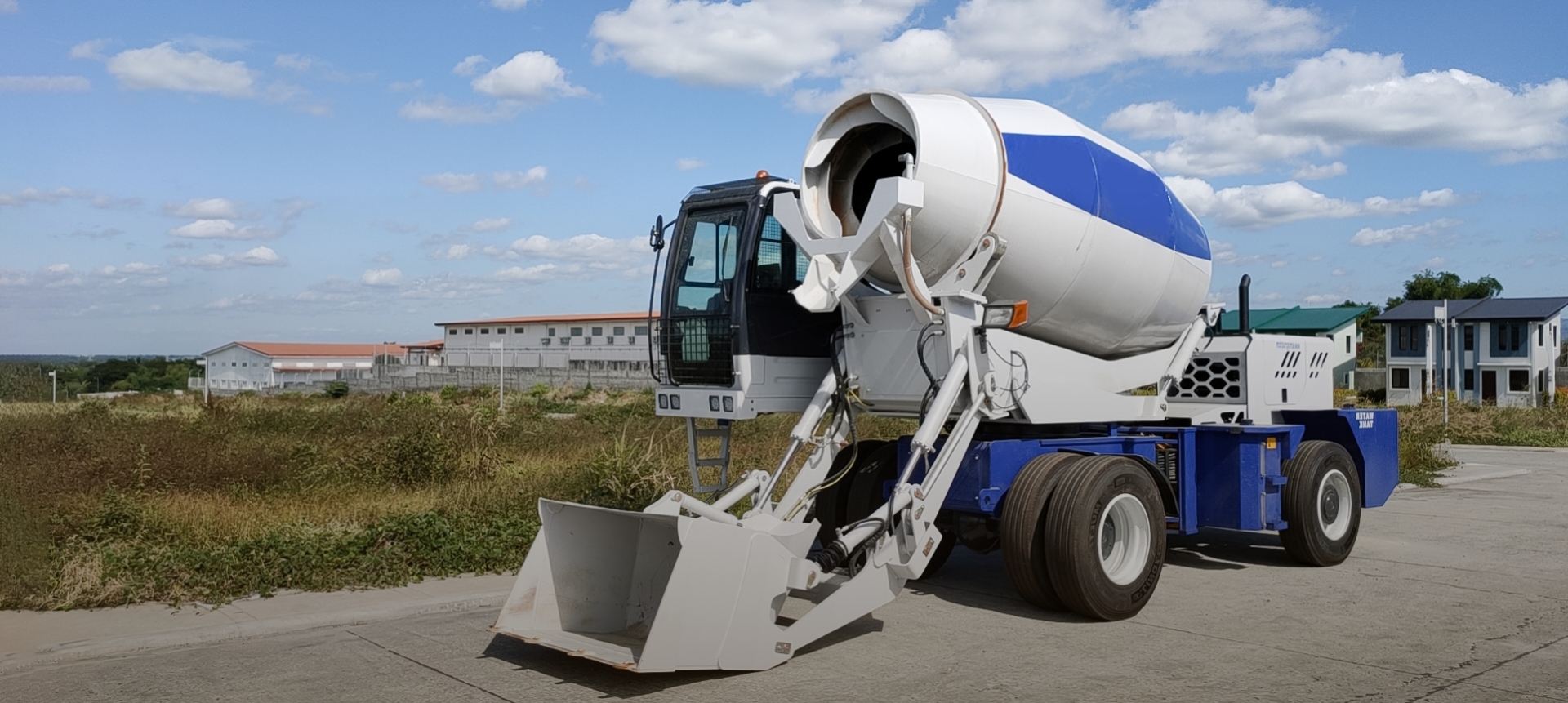Mountain construction presents a unique set of challenges: steep terrain, narrow roads, unpredictable weather, and limited infrastructure. Choosing the right concrete production equipment is crucial to ensure reliability, mobility, and cost-efficiency in such environments. Two common solutions are the self-loading concrete mixer and the mini concrete plant. But which one is better suited for mountain projects in regions like Chile and Peru? Let’s compare them based on mobility, setup, production capacity, labor needs, and cost.
Understanding Mountain Construction Requirements
Projects in mountainous regions typically involve infrastructure works like road reinforcement, slope protection, small bridges, rural housing, and mining-related construction. These sites are often remote and hard to access with standard concrete delivery vehicles. Additionally, concrete must be mixed and placed quickly to prevent setting due to altitude-related drying or temperature changes.
Both self-loading concrete mixers(hormigonera autocargante) and mini concrete plants offer on-site solutions, but they serve different purposes. Choosing between them depends on the project’s scale, accessibility, labor availability, and local logistics.

What Is a Self-Loading Concrete Mixer?
A self-loading concrete mixer is a highly mobile, all-in-one machine that combines loading, weighing, mixing, and transporting capabilities. Operators can control all steps from inside the cab. In countries like Chile and Peru, these mixers are popular for mountainous projects because of their compact size and off-road performance.
Advantages
- 4WD mobility for rugged terrain
- No external loading or weighing equipment required
- One-person operation with intelligent weighing and mixing system
- Ideal for daily production of 10–30 m³
Limitations
- Lower output compared to plants
- Less suitable for high-volume continuous supply
What Is a Mini Concrete Plant?
A mini concrete plant(mini planta de concreto) is a small-scale version of a stationary batching plant. It includes cement silos, aggregate hoppers, weighing systems, and mixers. While not as mobile as self-loading mixers, mini plants can produce 25–35 m³/h and support more structured operations.
Advantages
- Higher capacity per hour than self-loading mixers
- More consistent mix quality in larger volumes
- Can be paired with concrete pumps for efficient pouring
Limitations
- Requires flat, stable ground and setup time
- Needs separate loader and multiple operators
- Harder to relocate on steep or narrow terrain
Key Comparison for Mountain Construction
1. Mobility and Site Access
Self-loading concrete mixers are purpose-built for tough terrain. Their 4×4 capability allows them to navigate steep, muddy, or uneven mountain roads with ease. In contrast, a mini concrete plant needs to be transported and installed on a relatively flat, prepared area, which can be a challenge in hilly regions.
2. Labor and Operation
In regions like rural Chile and Peru, labor can be limited. A self-loading mixer(mixer autocargable Chile) only needs one trained operator, whereas a mini plant requires at least three: a loader driver, batching technician, and sometimes a plant manager. This difference significantly impacts cost and ease of use in remote areas.
3. Installation and Setup Time
Self-loading mixers are ready to use as soon as they arrive. No installation or calibration is required. On the other hand, a mini concrete plant may take 2–4 days to set up and test before production begins. For fast-track or emergency mountain projects, the speed advantage of a mixer is significant.
4. Concrete Volume and Output
If the project requires continuous large-volume pouring—such as for retaining walls or bridge decks—a mini concrete plant has the upper hand. But for scattered sites or daily small batches (10–20 m³), a self-loading concrete mixer offers more flexibility without overproduction or waste.
5. Cost Efficiency
The purchase and operational cost of a self-loading concrete mixer is generally lower. It combines several functions into one vehicle, reducing the need for other machines. In contrast, while mini plants offer better productivity, they require more equipment, space, and workforce—raising the overall investment.

Real-World Application in Chile and Peru
In the Andes region, many road and infrastructure projects rely on self-loading mixers due to challenging logistics. A self-loading concrete mixer Peru(concretera autocargable Perú) project, for example, allowed a contractor to deliver daily concrete batches to multiple scattered work zones across a mining site without needing stationary equipment.
Similarly, in southern Chile, a local contractor used self-loading mixers to build rural housing units across hilly communities. The mobility and one-person operation were key to maintaining efficiency and keeping project timelines on track.
Which Option Should You Choose?
If your mountain construction project involves remote locations, frequent relocation, and smaller concrete volumes, the self-loading concrete mixer is the best choice. Its ease of use, mobility, and independence from external infrastructure make it a practical solution for difficult terrains.
However, if your site is accessible and requires high-volume, continuous concrete production—such as in a tunnel, dam, or long road project—a mini concrete plant may be the more efficient option.
Conclusion
Mountain construction demands adaptability and efficiency. While both self-loading mixers and mini concrete plants can serve mobile operations, they cater to different needs. Contractors in countries like Chile and Peru often favor the self-loading concrete mixer for its flexibility and ease of operation in harsh environments. For larger-scale, stable site operations, a mini concrete plant remains a powerful option. Understanding your project’s specific requirements is the key to choosing the right equipment for success.
